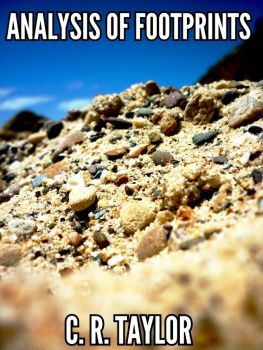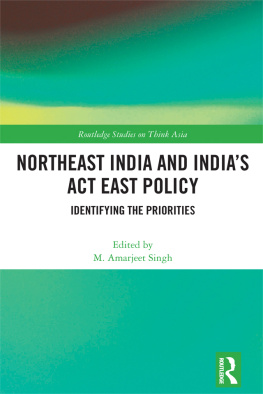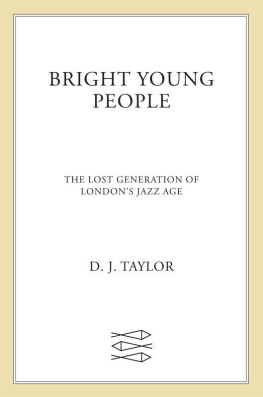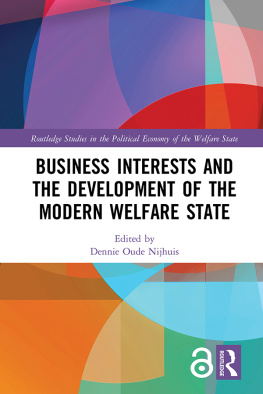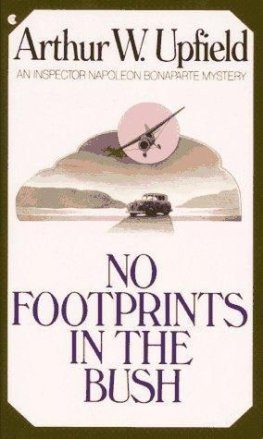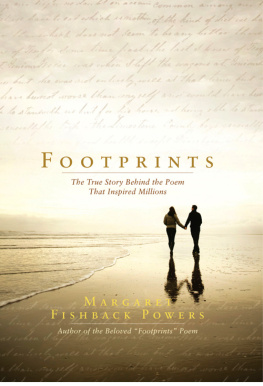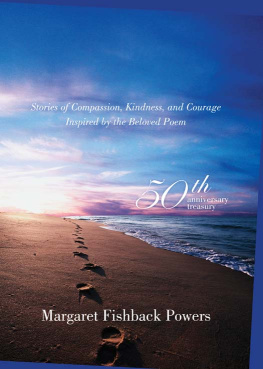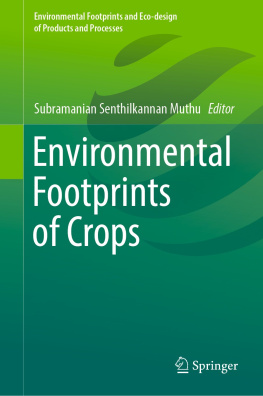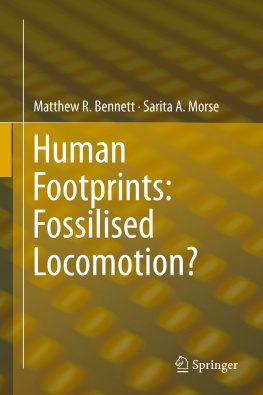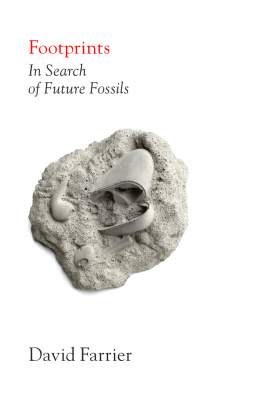Taylor - Analysis of footprints
Here you can read online Taylor - Analysis of footprints full text of the book (entire story) in english for free. Download pdf and epub, get meaning, cover and reviews about this ebook. genre: Religion. Description of the work, (preface) as well as reviews are available. Best literature library LitArk.com created for fans of good reading and offers a wide selection of genres:
Romance novel
Science fiction
Adventure
Detective
Science
History
Home and family
Prose
Art
Politics
Computer
Non-fiction
Religion
Business
Children
Humor
Choose a favorite category and find really read worthwhile books. Enjoy immersion in the world of imagination, feel the emotions of the characters or learn something new for yourself, make an fascinating discovery.
Analysis of footprints: summary, description and annotation
We offer to read an annotation, description, summary or preface (depends on what the author of the book "Analysis of footprints" wrote himself). If you haven't found the necessary information about the book — write in the comments, we will try to find it.
Taylor: author's other books
Who wrote Analysis of footprints? Find out the surname, the name of the author of the book and a list of all author's works by series.
Analysis of footprints — read online for free the complete book (whole text) full work
Below is the text of the book, divided by pages. System saving the place of the last page read, allows you to conveniently read the book "Analysis of footprints" online for free, without having to search again every time where you left off. Put a bookmark, and you can go to the page where you finished reading at any time.
Font size:
Interval:
Bookmark:
Analysis of Footprints
C. R.Taylor
Growing up in a Catholic environment, thatis, a Catholic primary and middle school education along with achurch-going father, I was exposed from an early age to a multitudeof hymns, prayers, parables, biblical tales, sentiments, sayings,phrases, metaphors, stories, analogies, songs, and poems to do withthe Christian faith. One of these articles, the subject of thisinquiry, was a particular favourite both of my school and of mypaternal family, pa included, but it was not until my late teensthat I actually considered the poem in any depth. Throughout mychildhood it had simply been, along with many other texts in thesame category, a thing which the authoritarian people around me,i.e. adults, found incredibly interesting, and yet which I did not.I attributed my disinterest to simply being too young tounderstand, however once I grew older, and was confident that mycapacity to understand incredibly interesting texts was sufficient,I was surprised to find that I still failed to be awed by it to theextent that the elders of my youth were. Indeed, perhaps thisfailing caused me to resent the poem itself, or perhaps thatresentment was due to disliking the poem of its own merit.Regardless, I eventually decided to compile this analysis, in orderto bring to bear, or perhaps uncover, some of the issues with thetext, both in composition - the construction of a comprehensivenarrative - and in interpretation - how the poem might affectpeoples decisions and indeed lives. In the former I feel I havesucceeded, although in the latter I have failed. Over the course ofwriting this analysis I lost track of the second goal, and insteadfocused completely on a number of specific interpretations. I feelthat while this analysis does admittedly contain a certain amountof unverifiable speculation, I have not sufficiently studied ethicsto say whether or not the poem gives an appropriate message tothose who have lost hope or may otherwise turn to religion in atime of strife. Because of this, the analysis will remain solely aliterary one, without delving into such meta-issues. Perhaps a morequalified individual will pick up where I have left off, andprovide ethical insight into the quality of the poem as a supporttool.
The following book will provide an analysisof the popular Christian poem, usually titled Footprints orFootprints in the sand. A short description of the poem followsfor the purpose of clarification of the topic of this document.Several instances of the poem can be found in their entirety in.
The poem is a prose narrative concerning adream in which the dreamer walks along a beach accompanied by God.The dreamer notices the two sets of footprints and associatescertain parts of the journey with various stages of his life. Thedreamer asks God why there only appears one set of footprintsduring the hard parts of life, to which God replies that duringthose hard times, He was carrying the dreamer.
The first part of this document will brieflydiscuss the multiple and conflicting claims of authorship to thepoem. It will then discuss the various forms this poem takes, andattempt to distill it to those raw elements common to all versions.The main body of this document will then begin, which will bedivided into three chapters. The first chapter will discuss theconcept and role of LORD within the poem, the second will concernthe nature of dreams and psychological interpretations of the storyas a dream, and the third part will discuss the poem with regard todeath, and any implications resulting from that interpretation.Endnotes have been added to clarify certain points and providesupplementary information.
The word WOW will mean a variety of thingsto all speakers of English, and at least some things to manynon-speakers of English and speakers of non-English. The etymologyof the word is of Scottish and Northern English dialecticonomatopoeic origins, probably from the first decade of thenineteenth century, and imitating such animalian utterances ashowls, wails, barks, whines, whinnies, or mews []. The phrase isalso an abbreviated form of waiting on weather, used particularlyin oil industries.
The use of wow as relevant to this paper isan abbreviation of the phrase wish only well, which is the nameand motto of the website at which we begin our analysis of thepopular 'Footprints' poem [].
WOW Zone have conducted their owninvestigation prior to this study. It would be redundant to conducta new investigation into the same subject, so a summary of WOWZone's investigation and findings is presented below.
The WOW Zone website originally hosted aversion of the poem in 1997, which sparked a global debate for thenext eight years over that version's authenticity, with manyindividuals claiming to be the original author of the poem.
An original handwritten copy of the poem wasfound in the possession of Mary Stevenson, (74 years old at thetime, now deceased.) Stevenson claimed to have written the scrap ofpaper in 1936 or 1939, and her benefactors claim that a forensicexpert declared the document legitimate.
This is in conflict with a claim toauthorship in 1964 by Margaret Fishback Powers and Carolyn Carty'sclaim of 1963 authorship. While Powers and Carty have attempted totake legal action to prove their authorship, the estate ofStevenson has not. It appears that Stevenson's version of the poemresides within the public domain while Powers and Carty claimcopyright. This is made more confusing due to Carty's claimeddecision to sign the poem anonymous. Burrell Webb, a formerorphan, also claims to have authored the poem in 1958. Webb claimsthat the poem is more or less a true account of an actualconversation that took place between he and God.
Webb explains via a letter to WOW Zone thathe was an orphan, and suffered abuse as a result. When he waseighteen or nineteen Webb turned to prayer, and engaged in frequentconversations with God as a means of coping with the abuse. Thefootprints story was apparently inspired by one of theseconversations.
Webb's claim to authorship is clearlyexceptional to those previously mentioned, as his takes the extremeview of a literal account of conversing with God. It is because ofthis exceptional claim that we must briefly examine in more detailWebb's case.
Neurologist Prof. V. S. Ramachandran proposestemporal lobe seizures as a cause of visions which may beinterpreted as religious or spiritual experiences [].
Memory is also widely known to be impaired byhigh stress situations. A 1991 study found that individuals, whenviewing an image of a man holding a gun, remembered clearly themost threatening part of the image (the gun) but only very vaguelyremembered other parts of the image, such as the gunman's face[].
Such insinuation that Webb may have beensuffering from epilepsy caused by a right-side temporal lobe lesionat the time during which he believes to have authored the poem isacademic without further investigation into his particular case andpersonal history, all of which is beyond the scope of thisbook.
As there are at least four slightly differentversions of the story [], this chapter will list elements common to atleast two versions of the story, before compiling them into a newversion, which will become the focus of this paper.
1. One night the Dreamer [] had a dream.
2. In the dream, the Dreamer walks along abeach with the LORD,
3. The Dreamer watches scenes from his lifeflash across the sky.
4. For each scene, the Dreamer notices twosets of footprints in the sand, one belonging to him and onebelonging to the LORD.
5. When the last scene of his life flashesbefore him, the Dreamer looks back at the footprints in the sandand notices that many times along the path of his life, there wasonly one set of footprints.
Next pageFont size:
Interval:
Bookmark:
Similar books «Analysis of footprints»
Look at similar books to Analysis of footprints. We have selected literature similar in name and meaning in the hope of providing readers with more options to find new, interesting, not yet read works.
Discussion, reviews of the book Analysis of footprints and just readers' own opinions. Leave your comments, write what you think about the work, its meaning or the main characters. Specify what exactly you liked and what you didn't like, and why you think so.

